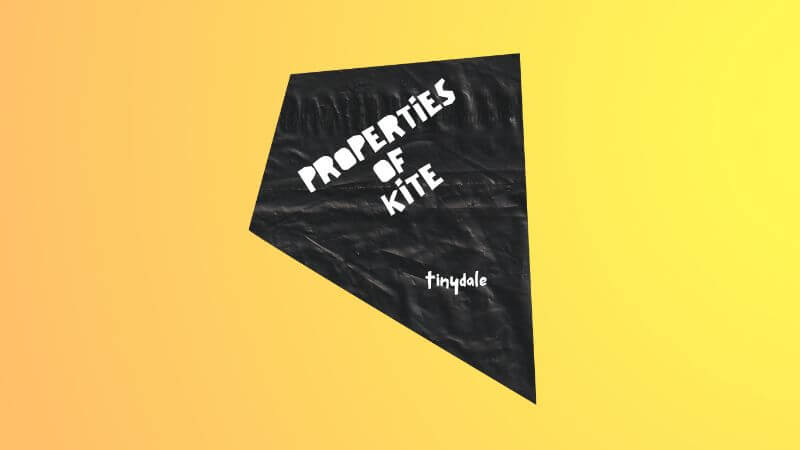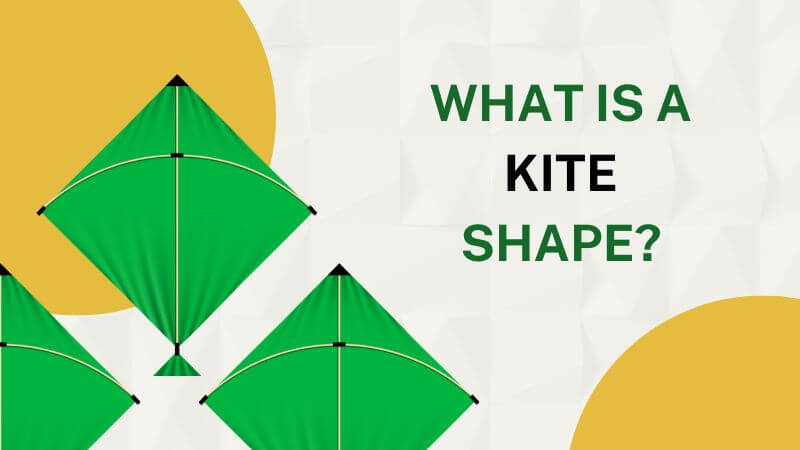You’re probably familiar with the properties of kite, which are enjoyable paper toys that fly wherever the wind blows.
The kite’s design is based on the geometric figure known as a “kite.”
In geometry, quadrilaterals come in a variety of shapes.
Some of these are parallelograms, like the square, rhombus, and rectangle, while others, like the trapezium and kite, are not.
A flying kite is the most typical illustration of a kite shape.
A kite is a “deltoid,” which is Greek for “having a triangle shape.”
Let’s examine the geometry of the kite and its characteristics.
What Is A Kite Shape?
A kite is a quadrilateral, a 2D geometry with four sides and four vertices.
It features two adjacent pairs of sides that are both the same length and have the same appearance—the top two sides appear to be the same as the bottom two sides.
Angles are equal when these two pairs meet (opposite angles in the centre of the form).
The paths cross at right angles if you draw a line from the highest vertex to the bottom vertex followed by a further line through the kite starting from every vertex.
A kite is a rhombus provided all of its sides are identical.
A kite is also a square when all angles are 90 degrees.
How To Construct A Kite In Geometry?
A kite can be made. Find four strands of uncooked spaghetti.
Split or cut two spaghetti strands such that they are equal in length but shorter than the other two.
Touch the short strands’ two terminals together.
The longer strands’ two terminals should be touched together.
Bring the last four ends together gradually until they contact one another on both the short and long pieces. You possess a kite.
Properties Of A Kite
A quadrilateral with two successive sets of equal sides and perpendicular diagonals is referred to as a kite.
A kite’s longer diagonal cuts across its shorter one.
Watch the kite ACBD below and compare it to its listed properties.
The diagonals, angles, and sides of the kite all have distinctive characteristics.
-
Properties Of A Kite : Sides
A quadrilateral must have two sets of sides that are equal to one another and touching in order to be a kite.
There are now two sets of parallel, congruent sides.
Even if you have one set of neighbouring, congruent sides, you won’t have a kite.
The lengths of the other two sides may not be equal. In such case, you would only have a quadrilateral.
There might be four parallel sides to your kite.
Your quadrilateral would be made up of a rhombus (four congruent sides) and a kite (two sets of adjacent, congruent sides).
-
Properties Of A Kite : Angles
In a kite, the internal angle formed by two sides of different lengths will always be equal to the opposing angle.
See the kite you drew?
K = T, and I = E.
All four inner angles might be equal, resulting in a kite that is also a square.
-
Properties Of A Kite : Diagonals
Our kite’s two diagonals, KT and IE, come together at a straight angle.
The diagonals of each kite meet at a 90° angle.
There is a dart when one of the diagonals is occasionally outside the shape.
It doesn’t matter; a kite’s diagonal intersection will always be a right angle.
The fact that one of the diagonals cuts across, or divides, the other diagonal is a second characteristic that distinguishes the diagonals of kites.
Both of them could cut each other in half to form a square, or just the longer one could cut the shorter one in half.
Fun Facts About Properties Of Kite
- A kite turns into a rhombus when all of its sides are parallel to one another.
- When a kite is not convex, it is referred to as a dart.
- The kite transforms into a square when all sides are congruent and all inner angles are 90 degrees.
- All the characteristics of a cyclic quadrilateral apply to a kite.
- A kite’s area is equal to half of the product of its diagonals.
Properties Of Kite: Area
The area A of a kite may be determined by dividing the product of the lengths of the diagonals p and q in half, as is true more generally for any orthodiagonal quadrilateral:
A is equal to fracp cdot q2.
Alternately, if is the angle between two unequal sides and a and b are the lengths of two unequal sides, then the area is
Display style A is equal to ab \cdot \sin{ \theta}.
Conclusion
A kite has several intriguing characteristics for what initially appears to be a relatively straightforward structure.
A kite is a quadrilateral having two sets of adjacent, congruent sides, as demonstrated by this written lesson.
Rhombi, darts, or square shapes are all acceptable types of kites.
We also know that angles formed by sides of different lengths are always congruent.
Finally, we know that one diagonal of the kite always bisects the other and that the diagonals always intersect at a right angle.
Tinydale is on YouTube, Click here to subscribe for the latest videos and updates.
Follow Us: Facebook | Instagram | Twitter | Youtube | Pinterest


